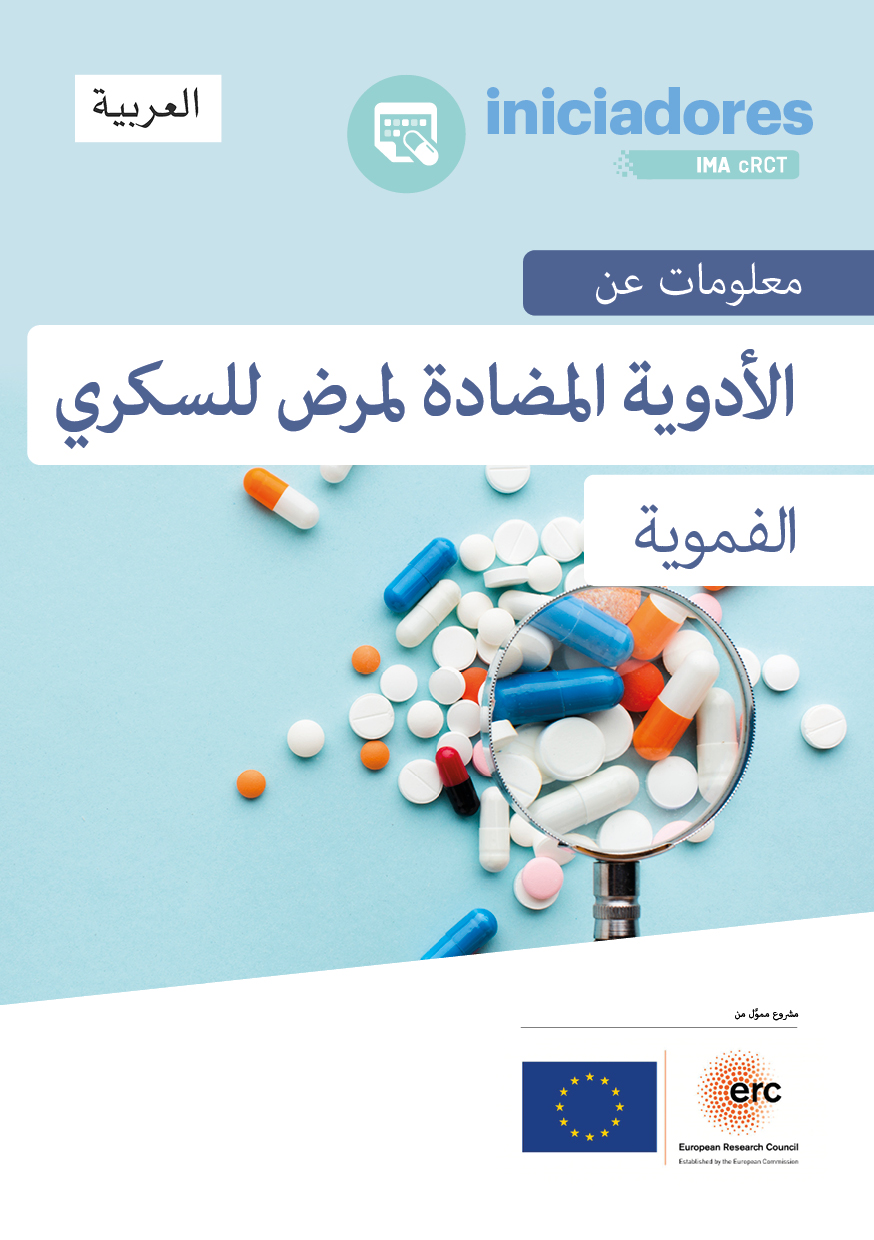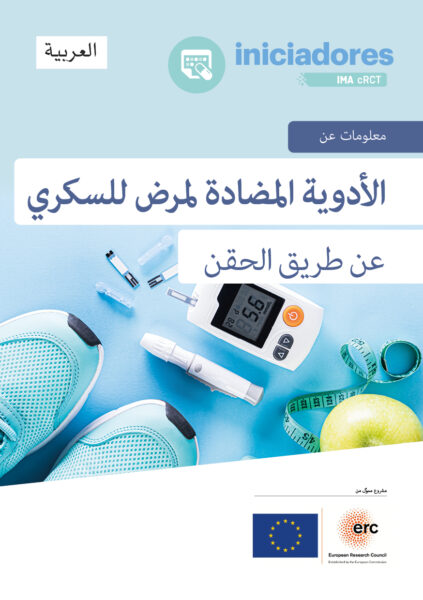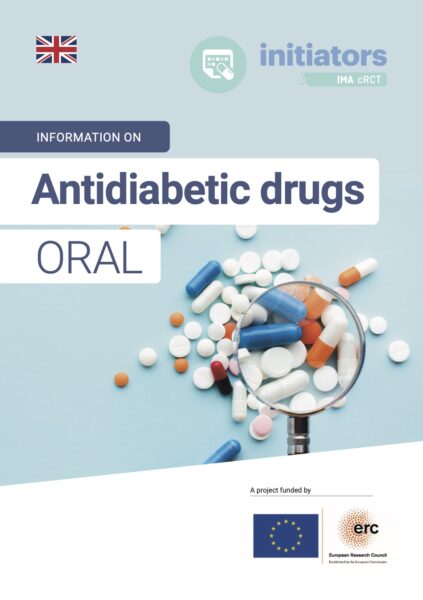Diabetes
What is diabetes?
Diabetes mellitus is a metabolic disorder that is characterised by the body making insufficient use of glucose. Glucose is a sugar that, when found in cells, acts as a source of energy for carrying out vital processes.
If the body is incapable of making use of it, instead of penetrating the cells it builds up in the blood, leading to an increase in the blood glucose level, known as hyperglycaemia.
Diabetes is a chronic disease that requires good metabolic control to prevent or reduce potential severe long-term complications, such as heart attack or stroke.
There are two types of diabetes that require medicinal treatment.
Type 1 Diabetes
This is an autoimmune disease that is characterised by a rise in blood sugar due to the pancreas failing to produce insulin. It usually occurs in children, adolescents and young adults. Type 1 diabetes represents 5-10% of all cases of diabetes.
Type 2 Diabetes
This is a disease that is characterised by an increase in blood sugar due to the body failing to produce or being unable to use insulin. Unlike type 1 diabetes, type 2 diabetes begins during adulthood. It is the most common form of diabetes and represents 80-90% of total cases.
Diabetes in Catalonia
In Catalonia, 14 out of every 100 people suffer from diabetes, and it is estimated that there are around 600,000 cases.
Diabetes affects more than 8% of the population aged 15 and over, and 20% of the population aged 65 and over.
Diabetes progression
One of the main problems with type 2 diabetes is that in the initial stages there are no observable symptoms, and it is therefore estimated that half of the people who suffer from type 2 diabetes are unaware of it.
Poor control of diabetes doubles the risk of death and vascular complications.
There are two main groups of complications depending on the type of arteries affected:
Small arteries
Vision loss
Vision loss
Damage to the blood vessels of the retina can cause blurred vision, loss of visual acuity, fields of vision, and difficulty seeing at night.
Kidney disease
Kidney disease
Damage to the blood vessels of the kidneys can cause the kidneys to stop filtering correctly. If detected in time, the damage can be reversible.
Little sensitivity in arms and legs
Little sensitivity in arms and legs
Damage to the blood vessels of the nervous system can cause pain, tingling sensations, or loss of sensitivity in the limbs.
Diabetic foot
Diabetic foot
This is the most common complication. It is the result of the loss of sensitivity and the damage to the blood vessels, wounds can get infected.
Main arteries
Risk of suffering a stroke
Risk of suffering a stroke
When it affects the arteries in the brain.
Risk of suffering a heart attack
Risk of suffering a heart attack
When it affects the arteries in the heart.
Risk of amputation
Risk of amputation
When it affects the arteries in the limbs.
Many diabetics do not have any symptoms and think that they do not have a problem
“Doing nothing” is not an option, diabetes does not resolve on its own
Complementary measures
A healthy lifestyle minimises the risks of diabetes and complements the medicinal treatment.
Blood pressure control*
Reduces the risk of suffering cardiovascular complications
A healthy balanced diet*
Improves resistance to insulin and short-term blood sugar levels
Regular physical exercise*
Helps to reduce blood sugar levels
Avoiding tobacco and alcohol*
Reduces cardiovascular risk
Weight control*
Helps to reduce blood sugar levels
* Benefits backed by science
Do you want to follow a healthy lifestyle?
We can explain how

Healthy eating
It is always necessary to follow a healthy eating plan to control body weight, together with taking regular physical exercise (more than 150 minutes a week).

Complement with medications
If diet and physical exercise are not enough, oral or injectable antidiabetic drugs will be added to help you control your diabetes.

Complement with insulin
If the diabetes is not brought under control, it will be necessary to add other oral or injectable antidiabetic drugs to the treatment.
What are Oral
Antidiabetic Drugs?
Oral antidiabetic drugs, also known as oral glucose-lowering drugs, are medicines that work by helping to regulate blood sugar levels.
The different treatments
There are several types of oral antidiabetic drugs and they each have different mechanisms of action. Therefore, it is necessary to know their effects and take them at the designated times.
CHARACTERISTICS
They reduce the amount of sugar absorbed by the body and help to control the amount of sugar in the blood. They are especially indicated for patients who are overweight.
Metformin
- Acts on the: Liver, Muscle
- Benefits
Reduction of blood sugar
Reduction of eye, kidney and neurological damage
Protection against vascular events
- Adverse effects
- How and when to take it
During or after meals
Common. May affect less than 1 in 10 people
Very Common. May affect more than 1 in 10 people
CHARACTERISTICS
They stimulate the secretion of insulin by action of the pancreas.
Gliclazide/Glipizide/Glimepiride
- Acts on the: Pancreas
- Benefits
Reduction of blood sugar
Reduction of eye, kidney and neurological damage
- Adverse effects
- How and when to take it
Before or during meals
Common. May affect less than 1 in 10 people.
Very Common. May affect more than 1 in 10 people
CHARACTERISTICS
Their action is similar to sulfonylureas, stimulating the secretion of insulin by action of the pancreas.
Repaglinide
- Acts on the: Pancreas
- Benefits
Reduction of blood sugar
Reduction of eye, kidney and neurological damage
- Adverse effects
- How and when to take it
Before main meals
Common. May affect less than 1 in 10 people
Very Common. May affect more than 1 in 10 people
CHARACTERISTICS
They act on the muscles by reducing insulin resistance and indirectly improving insulin secretion. They are usually used in combination with another oral antidiabetic treatment, such as Metformin.
Pioglitazone
- Acts on the: Muscle
- Benefits
Reduction of blood sugar
Reduction of eye, kidney and neurological damage
- Adverse effects
- How and when to take it
With or without food
Common. May affect less than 1 in 10 people
Very Common. May affect more than 1 in 10 people
CHARACTERISTICS
They reduce absorption of carbohydrates into the digestive system and thus reduce glucose spikes after eating.
Acarbose
- Acts on the: Intestines
- Benefits
Reduction of blood sugar
Reduction of eye, kidney and neurological damage
- Adverse effects
- How and when to take it
With the main meals
Common. May affect less than 1 in 10 people
Very Common. May affect more than 1 in 10 people
CHARACTERISTICS
They act by inhibiting the DPP-4 enzyme and as a result they cause an increase in insulin secretion in the pancreas and inhibit glucagon secretion.
Sitagliptin
- Acts on the: Stomach, intestines, liver and pancreas
- Benefits
Reduction of blood sugar
Reduction of eye, kidney and neurological damage
- Adverse effects
- How and when to take it
With or without food
Common. May affect less than 1 in 10 people
Very Common. May affect more than 1 in 10 people
CHARACTERISTICS
They promote the excretion of glucose in urine and reduce high blood sugar levels.
Empagliflozin/Canagliflozin/Dapagliflozin
- Acts on the: Kidneys
- Benefits
Reduction of blood sugar
Reduction of eye, kidney and neurological damage
Weight loss
Protection against vascular episodes
- Adverse effects
- How and when to take it
With or without food
Common. May affect less than 1 in 10 people.
Very Common. May affect more than 1 in 10 people.
CHARACTERISTICS
This medicine contains a hormone (similar to glucagon) that stimulates insulin secretion when there is a lot of glucose in the blood (hyperglycaemia), but not when there is little (hypoglycaemia). It also inhibits the secretion of glucagon in the body and slows down gastric emptying.
Semaglutide
- Acts on the: Liver, pancreas and stomach
- Benefits
Reduction of blood sugar
Weight loss
- Adverse effects
- How and when to take it
On an empty stomach anytime. You should wait 30 minutes to eat or drink.
Common. May affect less tan 1 in 10 people.
Very common. May affect more than 1 in 10 people
These are the most commonly used oral antidiabetic drugs, but there are other medicines that can be used. If you have any questions about your treatment, you can always consult your doctor, practice nurse or pharmacist.
You can also find reliable information in the Medicines Information Centre of the Spanish Agency of Medicines and Medical Devices.
What is a hypo?
A hypo, or hypoglycaemia, occurs when the blood sugar level is lower than normal. There is a risk of suffering from hypoglycaemia when using a medicinal treatment for diabetes.
If you have any of these symptoms, you may be suffering a hypo:
→ Irregular or rapid heart beat
→ Fatigue
→ Pale skin
→ Trembling
→ Anxiety
→ Sweating
→ Hunger
→ Irritability
→ Tingling or numbness of the lips, tongue or cheeks
In these cases, it is important to eat 1 or 2 pieces of fast-absorbing carbohydrates (e.g. fruit). Follow the instructions given to you by the professionals from your primary care centre and, if necessary, contact the medical services urgently.
Monitoring Plan
The clinical practice guidelines recommend an annual check-up with the primary care nurse, and blood tests every 6 months.







What are Injectable Antidiabetic Drugs?
Injectable antidiabetic drugs are medicines administered by subcutaneous route (underneath the skin) and their function is to help regulate the blood sugar level.
Patients with type 1 diabetes mellitus do not generate insulin in the pancreas and have high blood glucose levels. Therefore, they need to give themselves insulin injections to be able to live. In the case of patients with type 2 diabetes mellitus, injectable antidiabetic drugs are used when diabetes cannot be controlled with diet and oral antidiabetic drugs.
The different treatments
The treatment with injectable antidiabetic drugs may be with human insulin and short-acting insulin analogues (they are distinguished by the time they take to act and the duration of the effect) or by GLP-1 agonists.
CHARACTERISTICS
Insulin is a hormone that the body produces in the pancreas. This hormone helps the body to use the glucose that we ingest with food. When the pancreas does not produce insulin, this has to be administered.
Insulin aspart/Insulin lispro
- Benefits
Reduces blood sugar
- Adverse effects
- Duration
• Insulin aspart: 3-5 hrs
• Insulin lispro: 2-5 hrs
Common. May affect less than 1 in 10 people
Very Common. May affect more than 1 in 10 people
CHARACTERISTICS
Insulin is a hormone that the body produces in the pancreas. This hormone helps the body to use the glucose that we ingest with food. When the pancreas does not produce insulin, this has to be administered.
Regular insulin
- Benefits
Reduces blood sugar
- Adverse effects
- Duration
6-8 hrs
Common. May affect less than 1 in 10 people
Very Common. May affect more than 1 in 10 people
CHARACTERISTICS
Insulin is a hormone that the body produces in the pancreas. This hormone helps the body to use the glucose that we ingest with food. When the pancreas does not produce insulin, this has to be administered.
NPH insulin/Insulin detemir
- Benefits
Reduces blood sugar
- Adverse effects
- Duration
16-24 hrs
Common. May affect less than 1 in 10 people
Very Common. May affect more than 1 in 10 people
CHARACTERISTICS
Insulin is a hormone that the body produces in the pancreas. This hormone helps the body to use the glucose that we ingest with food. When the pancreas does not produce insulin, this has to be administered.
Insulin glargine
- Benefits
Reduces blood sugar
- Adverse effects
- Duration
18-24 hrs
Common. May affect less than 1 in 10 people
Very Common. May affect more than 1 in 10 people
CHARACTERISTICS
Insulin is a hormone that the body produces in the pancreas. This hormone helps the body to use the glucose that we ingest with food. When the pancreas does not produce insulin, this has to be administered.
Regular + NPH Insulin/Insulin Lispro + NPL/Insulin Aspart + Aspart-Protamine
- Benefits
Reduces blood sugar
- Adverse effects
- Duration
24 hrs
Common. May affect less than 1 in 10 people
Very Common. May affect more than 1 in 10 people
CHARACTERISTICS
This medicine contains a hormone (similar to glucagon) that stimulates insulin secretion when there is a lot of glucose in the blood (hyperglycaemia), but not when there is little (hypoglycaemia). It also inhibits the secretion of glucagon in the body and slows down gastric emptying.
Dulaglutide/Exenatide/Liraglutide
- Benefits
Reduction of blood sugar
Weight loss
Protects against cardiovascular episodes
- Adverse effects
- Duration
• Dulaglutide: 7 days
• Exenatide: 12 hrs
• Liraglutide: 24 hrs
Common. May affect less than 1 in 10 people
Very Common. May affect more than 1 in 10 people
These are the most commonly used injectable antidiabetic drugs, but there are other medicines that can be used. If you have any questions about your treatment, you can always consult your doctor, practice nurse or pharmacist.
You can also find reliable information in the Medicines Information Centre of the Spanish Agency of Medicines and Medical Devices.
Is it compatible with breastfeeding?
Consult the compatibility of your treatment with breastfeeding
Where are Injectable Antidiabetic Drugs administered?
Insulin and GLP-1 agonists are injected into the subcutaneous tissue. They can be injected into different areas and it is recommended to keep changing the area to avoid hypertrophy or hardening of the area.

The puncture sites are:
1 > Arm
2 > Thigh
3 > Abdomen
4 > Buttocks
Monitoring Plan
The clinical practice guidelines recommend an annual check-up with the practice nurse, and a blood test every 6 months.









